Sheffield Royal Navy veteran remembers his time during the 1982 Falklands conflict
and live on Freeview channel 276
Phil Thicket, aged 66 from Hackenthorpe Sheffield, joined the Royal Navy straight from school in 1971 at the age of 16.
The former Frechville school pupil joined up as an electrical mechanic.
Advertisement
Hide AdAdvertisement
Hide AdHe had served for 11 years before the Falklands conflict started on April 2, 1982.
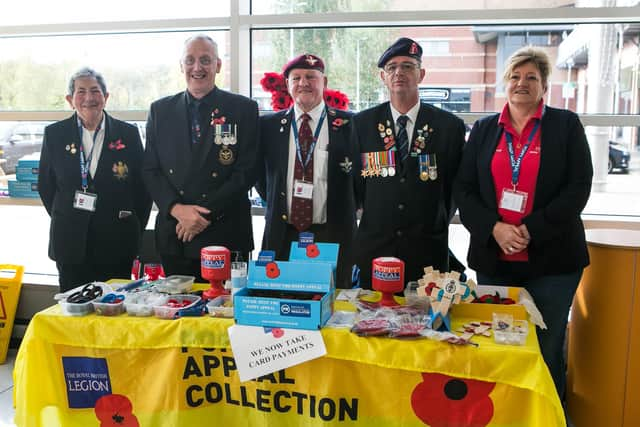

He was a Petty Officer, serving on HMS Fearless.
Phil said: “We’d just just got back from deployment in the West Indies. We’d been away for about three months.
“We were then going through a maintenance period, half the ship's company had gone on leave, and that's when we heard that the Argentine forces had invaded.
“Everything changed. We had to get everything done as quickly as possible – we were sailing within a week.”
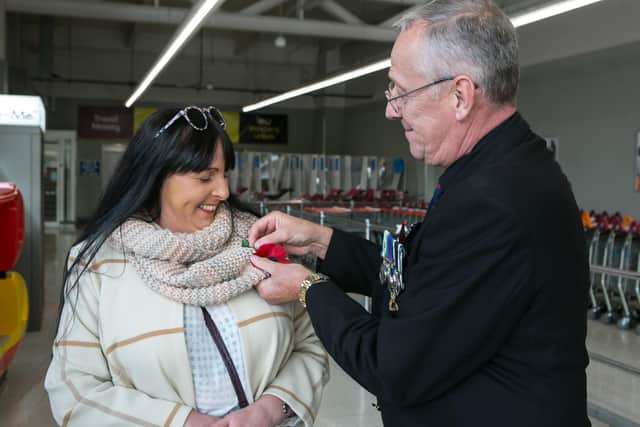

Advertisement
Hide AdAdvertisement
Hide AdAt the time Phil was married to Debbie and they had two children living in married quarters in Portsmouth.
His wife was naturally concerned about the developing events.
Phil said: “She was worried, but I’d already told her it would probably be over by the time we’d got there.
“We all thought that – everyone thought that. The diplomatic side would kick in, and it would be sorted before we got there.
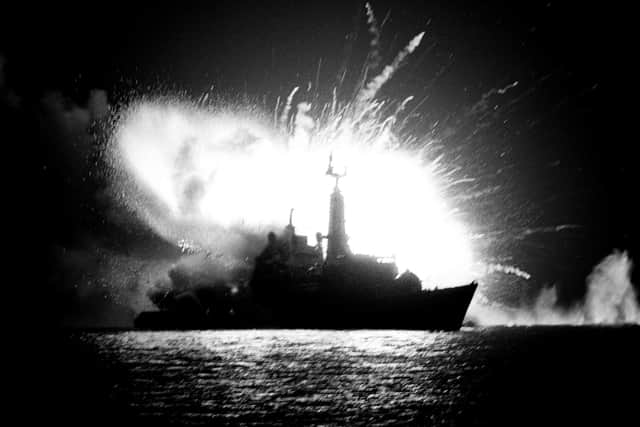

“It would be a waste of time, that’s what we all thought.”
Advertisement
Hide AdAdvertisement
Hide AdPhil first became aware that the conflict wouldn’t be solved by diplomatic means when the Argentine cruiser the General Belgrano was sunk by the submarine HMS Conqueror.
Phil recalled: “It became real. We were on our way there and the General Belgarno was hit by the submarine Conqueror, and HMS Sheffield was hit – that's when we knew it was game on.
“We were nearly at the Ascension islands, I think. The captain came on the broadcast system and told everybody that HMS Sheffield had been hit.
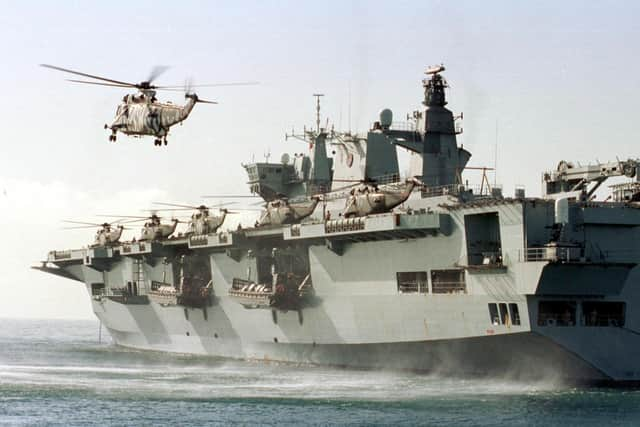

“It felt as if the ship sunk in the water two or three feet.
Advertisement
Hide AdAdvertisement
Hide Ad“Once we’d heard that, we knew it was game on. We were going to get back at them for sinking one of our ships.”
Phil’s ship HMS Fearless and sister ship HMS Intrepid both had LPD landing platform docks. Fearless also provided a base for Command Headquarters
San Carlos Bay – a stretch of water between the East and West Falklands – was the area where several of the task force ships were based. Fearless and Intrepid were tasked with collecting troops from various ships to put them ashore using one of their four landing craft.
Phil recalled: “We had to go around all the other ships that brought troops down and take them off these ships, then land them on the beaches.”
Advertisement
Hide AdAdvertisement
Hide Ad“We had to take the paras and marines off these ships. They came aboard us and our sister ship Intrepid, and they all got ready.
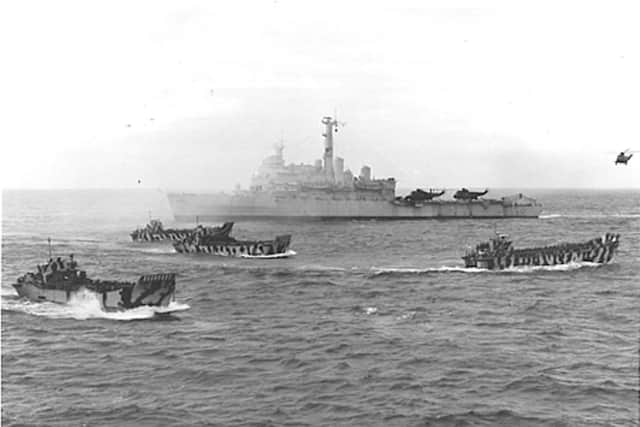

“Our ship could take 1,000 men, and we had 1,500 on board when we sailed to Falkland Sound and off-loaded troops on our landing craft, and put them on the beaches.”
Phil, along with many of the troops, expected to encounter strong resistance from Argentine forces, while attempting beach landings.
“We were expecting to get shot at as we approached the beaches, but we never did.”
Advertisement
Hide AdAdvertisement
Hide AdThe reason for the unchallenged approach may have been due to the Special Forces going ahead of the landings, driving the Argentine forces away from the planed landing area, or changing their strategy.
Phil remembers a battle between Special Forces and Argentine forces taking place at Fanning Head, the entrance to San Carlos.
Phil said: ”We were trying to get everyone into San Carlos Water, and you could see the battle raging on Fanning Head.
“There was gun fire support from the ships, they were dropping shells on them (Argentine Forces).
Advertisement
Hide AdAdvertisement
Hide Ad“They’d put lads on the hill, so you could see the tracer. They needed to take Fanning Head so that the entrance to San Carlos was free and open.
“Half an hour later we were on the beach putting our lads ashore.
“I felt scared when we were going in with landing craft to put the lads on the beaches, at first because we didn’t know what was going to happen.
“Everyone’s seen pictures of Normandy – you expect them to be firing at you as you're coming in,” he said.
Advertisement
Hide AdAdvertisement
Hide Ad“The one time I was really afraid was the day HMS Antelope got hit. There was an air raid warning red. We were in the middle of the water when it came in, and within seconds the aircraft were there.
“Antelope was anchored. We saw the bomb go into her, but she never blew up then, I was a couple of hundred yards away.
“As the plane came back around he actually machine gunned us.”
On May 23, HMS Antelope came under attack. One of two unexploded 1,000 pound bombs struck the ship killing Steward Mark R Stephens. At 17 he was one of the youngest men serving in the conflict.
Advertisement
Hide AdAdvertisement
Hide AdHowever they did not explode and the ship was moved to more sheltered waters so bomb disposal technicians from the Royal Engineers could attempt to defuse them.
Of the two bombs one was inaccessible due to bomb damage, and debris around it.
After three failed attempts to defuse the bomb remotely, they attempted to disable the bomb by way of a controlled explosion. The small controlled charge detonated the bomb killing Staff Sergeant James Prescott instantly and severely injuring Warrant Officer John Phillips.
This caused catastrophic damage to the ship, also triggered numerous fires and further explosions.
Advertisement
Hide AdAdvertisement
Hide AdCommander Nick Tobin gave the order to abandon ship - he was the last person to leave the stricken ship. Antelope broke into two and sank.
Phil went through a lot during the conflict and saw a lot of things he says he will never forget.
One was the memory of HMS Antelope being struck.
Another, which he remembers daily, was when one of the four landing craft he helped to maintain had an issue with a generator and called for assistance.
During an air raid a generator had gone down. Phil was on another landing craft Foxtrot Two.
Advertisement
Hide AdAdvertisement
Hide AdPhil said: “What would have happened if they were near to us, I would have jumped over with my tool bag and tried to fix it, but it was too late – they’d got sent off to do something else.
“It was the same aircraft that hit Sir Galahad and Sir Tristram.”
Foxtrot Four was hit by a missile fired from Argentine A-4B Skyhawks.
Of the 17 on board six perished.
“All the time I think about the six mates I lost on the other landing craft.
“One was from Sheffield; he was an ex-Marine Cadet.”
Advertisement
Hide AdAdvertisement
Hide AdRobert Griffin, who attended King Edward VII died in the missile strike.
“Jessie and Dusty were instantly killed when the missile hit the engine room.
“It was pure luck I wasn’t on there, pure luck I couldn’t get to them on time”
Later, when Phil went back onto his parent ship Fearless a couple of weeks after the bombing, a colleague exclaimed in shock when he saw him: “Phil, we’d been told you were dead.”
Advertisement
Hide AdAdvertisement
Hide AdPost conflict veterans have spoken about fear and how they dealt with it.
Phil said: “Because we’d been that well trained it just came natural to you.
“You’ve got to do it, you’re still going to get frightened.
“I don’t think anyone who gets fired at ever, aren’t a bit frightened, at least.
“But the training takes over and you’ve just got to do it.”
Fearless was in San Carlos Water until the surrender was announced.
Advertisement
Hide AdAdvertisement
Hide AdOn June 14 1982 General Mario Menendez surrendered to Major General Jeremy Moore, Commander of British Land Forces.
“We were there in San Carlos until the surrender was given, then we went round to Port Stanley,” said Phil.
He found out about the surrender over the ship's radio.
General Menedez signed the surrender aboard Phil’s ship, Fearless.
Phil remembers: “They brought the General, their General on board our ship, they signed the surrender on board.”
Advertisement
Hide AdAdvertisement
Hide AdHe was kept on board for two or three days in one of the officers' cabins, with a guard outside before he was offloaded in Port Stanley.
The surrender meant the soldiers, airmen and seamen could return home.
Phil said: “We were elated, everyone was chuffed to bits.
“It took a long while for it to sink in. You’ve been told it’s over, but you were not sure.
“We set back to the UK around June 21, and got back to Portsmouth on July 14.
“Everyone couldn't wait to get home, it was good.
Advertisement
Hide AdAdvertisement
Hide Ad“My wife and family, mum and dad were there, her mum and dad and were there, as well as the kids,
“It felt really good.
“There were loads of people there. They lined the promenade along Southsea, everyone was waving.”
Twenty years after the invasion and subsequent conflict, Phil returned to the Falklands as a civilian.
“We went back in 2002, I went back with the South Atlantic Medal Association. They had a pilgrimage back there.
“We chartered a plane and took about 200 of us back.
“It was good to go back, because it got rid of a few ghosts.”